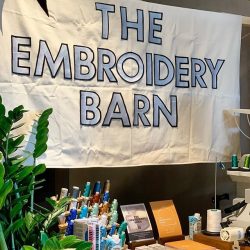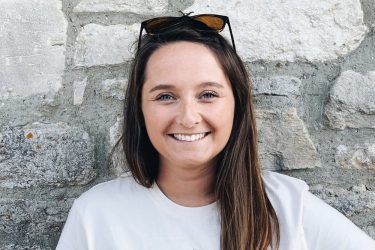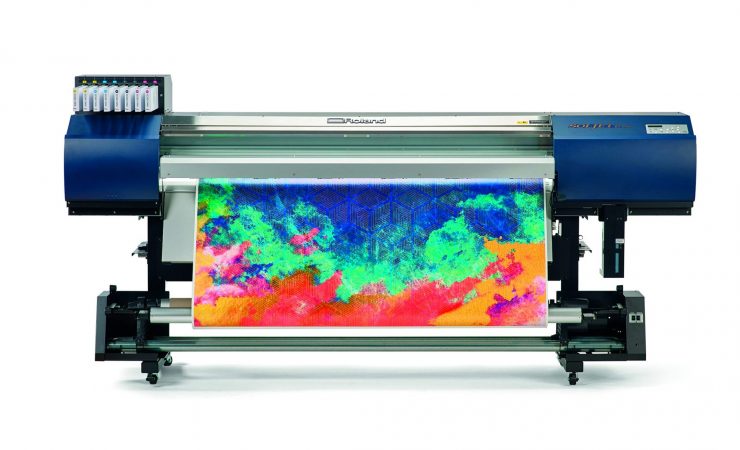Printers operating in ‘conventional’ digital spaces are often surprised at how easily they can move into producing digitally printed textiles. Many find that they already have most of the experience and equipment needed and can open up entirely new markets with only minor investments. Charlie Kortens spoke to people who have already turned their hand to textiles to find out what it entails
As with much of commercial print, textiles was hit by the coronavirus pandemic. Garment decorators, those who rely heavily on merchandise, teamwear, school uniforms and corporate branding were all hit quite heavily when lockdown was introduced back in March. As is so often the case, it is those that have shown an ability to adapt who will likely survive and many printers have moved into producing masks and gowns, social distancing signage and clothing for charities and fundraising. For those not previously involved in textiles this only goes to show how seamless the shift into that space can be.
There has been plenty of new technology entering the market in recent years, making textiles printing, more cost-effective and more time efficient than ever before. But getting involved doesn’t require a huge investment, anyone wanting to break into garment printing, for instance, can get going for only a few thousand pounds. All they need is a good quality heat press, some transfer papers and a vinyl cutter.
There are also direct-to-garment printers out there available for around £3000, ideal for those wanting to get started and print a couple of hundred shirts a week. Examples include the Roland BT-20 and the Ricoh Ri100.
Dorchester
It is a Roland VersaSTUDIO BT-12 that has helped bring The Embroidery Barn into the 21stcentury. At least that is the view of owner Rosie Lees, who took over the Dorchester-based company in November of 2018. At first glance Ms Lees might not seem the obvious person to have moved into textile printing, after all her background is in water sports and sailing.

The Embroidery Barn was founded in 1998, before Ms Lees took it over in 2008
‘I had no experience of printing or embroidery at all,’ she says. ‘But after hearing about the opportunity I couldn’t forget about it, I’m hugely passionate about sustainability and the environment and I thought it was a fantastic opportunity to build a green business.’
After Ms Lees bought the company, the previous owners stayed on for the busy period over Christmas in a handover that worked ‘really well.’ What worked less well, however, was the company’s existing equipment. A major embroidery machine broke down at a crucial time and replacing this kicked off a series of investments that culminated in the installation of the Roland VersaSTUDIO BT-1.
‘I already had a Roland print and cut machine,’ Ms Lees explains, ‘and I’d taken part in a Roland training course so I was familiar with the company and had had great experiences with them. I first heard about DTG online and learned more after visiting Printwear & Promotion at the NEC in Birmingham. I was keen from the very beginning as it is so much more environmentally friendly than vinyl, with no waste plastic.
In terms of the machine itself, when I saw the Roland BT-12 (at Printwear and Promotion) I knew it was perfect,’ Ms Lees adds. ‘Our older printing machines can be complicated and clunky but with the BT-12 you just press a button and it off it goes. It’s a smooth, lovely process and, besides, we didn’t have space for one of the bigger boys!’
In terms of what the desktop printer, which can print directly to cotton T-shirts, sweatshirts, tote bags and other products, is actually being used to produce, Ms Lees says, ‘We print pretty much everything when it comes to clothing. We work closely with equestrian centres and stables as well as with local schools but we’ll basically turn our hand to anything our customers want us to try. We don’t have a minimum order and can offer lots when it comes to personalisation, I think that makes us very popular.’

Before moving into print Rosie Lees worked in water sports and sailing
Of course that was before lockdown was imposed in March, but even so Ms Lees hasn’t slowed down. ‘When lockdown first happened I had to decide whether to furlough myself or not,’ she explains. ‘In the end I decided to keep going because I thought I might go insane! It was a good decisions as, along with a couple of friends, I was able to start producing and distributing complimentary face masks for vulnerable people in my area.
‘Since then we’ve started producing branded and corporate PPE for businesses, we come out close to the top of Google searches if you search for ‘embroidered masks’ so our machines have been running non-stop with orders coming in from across the country!’
With so many print companies across the UK also producing masks and gowns, does Ms Lees think that they will recognise just how easily they could move into textiles? ‘Absolutely,’ she says. ‘I expect that plenty of people will recognise the opportunity, see that they could do it and explore things.’
In terms of her own future Ms Lees is also in the process of launching a sustainable clothing brand, with organic garments manufactured and personalised at her premises. ‘I’ve always wanted to do something like this,’ she says. ‘But the whole journey has been incredibly exciting, some of the things I can do with the DTG printer are incredible, all without any plastic waste.’
Not a bad journey for someone who knew nothing at all about print less than two years ago, and has had to deal with a pandemic and a lockdown in the meantime. What advice would Ms Lees give to people looking to follow her in her footsteps and move into textile printing? ‘Talk to other people and companies,’ she says instantly. ‘I was afraid to do it at first, relying on Google and YouTube to answer my questions, but after I started to go to events and meet people I started to ask… it’s a nice industry and people are happy to help.’
Western Super Mare
Roland machines must be popular in the West Country, down the road in Weston Super Mare anEJ-640 DECO printer has just been installed at The Print Hive. Only officially introducedin March, and now available throughout the EMEA region, the printer was designed specifically for the interior décor market, runs water-based inks and is able to produce customised wallpaper, lampshades, blinds, posters, exhibition graphics and outdoor promotions. Roland says ‘it is intended to meet the needs of the ever-growing consumer appetite for eco-friendly products and designs that stand out from the crowd.’
Unlike Rosie Lees, director Chaz Dobson is an old hand when it comes to print. ‘I went straight from school into the industry at the age of 17,’ he says, ‘I was an apprentice sign maker where I learnt the trade as well as essential skills such as preparing files for print, dealing with customers and production workflow. I took the plunge in 2012 to go self-employed and The Print Hive was born.’

After working in the industry since he was 17, Chaz Dobson started his own business in 2012
Mr Dobson has worked with Roland ever since, having installed his first machines, a Roland SC-545 EX print and cut device along with an Easymount laminator, in his back bedroom. Eight years later, and having built up a loyal client base, Mr Dobson works out of 3000sqft premises, ‘With a dedicated team behind me supplying high quality printed products to the trade including sign makers, design agencies, interior designers and creatives.’
‘After our SC-545 we invested and upgraded to the Roland XR-640 which is still an integral part of our production kit today,’ Mr Dobson continues. ‘Most recently we installed the new Roland EJ-640 DECO printer. Being based in Weston Super Mare, we’re only 10 minutes down the road from the Roland showroom in Clevedon so viewing and testing the latest kit is easy.
But why opt for the EJ-640? Mr Dobson explains, ‘We have noticed over the past year or two a big shift in the industry with regards to bespoke interior decor. With new capabilities in technology, short-run print of personalised wallpapers, roller blinds, wall art and stretched fabric frames are easily achieved with no expensive initial set-up costs, whether for the commercial market or more increasingly the domestic home market.
‘This led us to the launch of www.houseofwalls.co.uk in 2019, it’s a site which enables customers to have their image of choice printed onto a range of printed products for their home or office space. People are learning that they are no longer restricted to ‘off the shelf’ decor items and the option to turn white, dreary areas of their office or home into colourful and personalised areas is now a quick and affordable option.’
Certainly this side of the business is more than just a side-offering for the Print Hive, as Mr Dobson makes clear, ‘We are seeing a shift from regular ‘signage’ printing to more bespoke, customised printing, and we are very excited to see where this goes. Our Roland EJ-640 DECO offers 100% green printing which in this very environmentally conscious world is ever more important to our clients. Bespoke wallpaper and wallcoverings is now 40% of our business and increasing month on month. We are also seeing an increase in printed fabrics such as leatherette fabric which our clients are using in highly imaginative ways such as upholstery and bespoke menu covers. These are all constantly being added to our online store.’
The piece of advice Mr Dobson finishes with regards those machines you might invest in, if you’re thinking of making the shift into textiles. ‘We often get asked what to look out for when purchasing new machinery but unfortunately there is no simple answer,’ he says. ‘You need to know your market, what your customers expect and what they expect to pay for their print. Rarely is ‘cheap’ the best option, we’d say take your time, look around, visit shows, exhibitions and open-houses. Take your own media and files, running ‘real-life’ jobs will show you if the kit is suitable and whether there is a place for it in your business.’
Trying to break into digital prints next big growth area might seem daunting, but as we’ve seen, the move really can be smooth.





